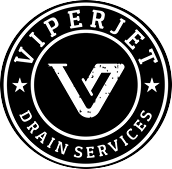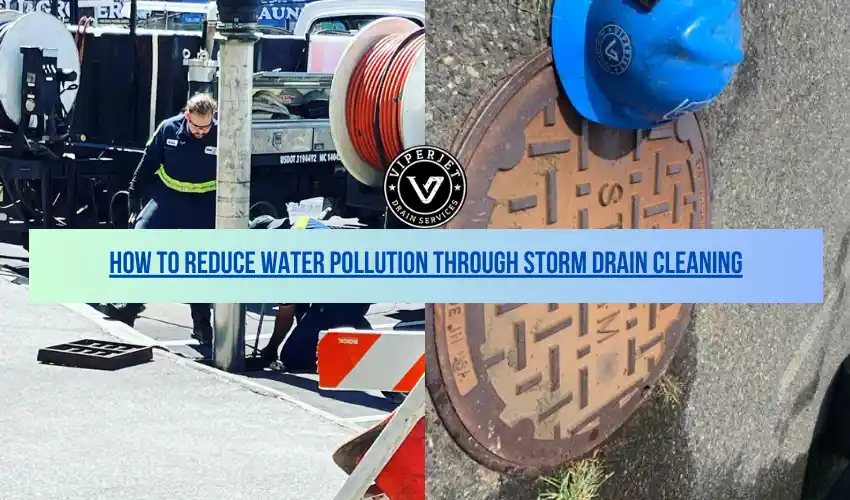Water pollution is a pressing environmental issue that affects ecosystems, wildlife, and human health. One often overlooked contributor to water pollution is stormwater runoff, which can carry pollutants into local waterways via Storm Drains. Regular cleaning and maintenance of storm drains are crucial steps in mitigating this problem. This article explores how storm drain cleaning can significantly reduce water pollution and outlines practical measures to achieve this goal.
Understanding Stormwater Runoff and Pollution
Stormwater runoff occurs when precipitation from rain or snowmelt flows over impervious surfaces such as roads, driveways, and rooftops. Unlike natural landscapes where water can be absorbed and filtered by soil and vegetation, impervious surfaces prevent this infiltration, leading to an increase in runoff volume and speed. As stormwater travels across these surfaces, it picks up various pollutants, including:
Debris and Litter: Items like plastic bottles, cigarette butts, and food wrappers.
Sediments: Soil particles that can cloud water and harm aquatic habitats.
Chemicals: Pesticides, fertilizers, oil, grease, and heavy metals.
Nutrients: Excess nitrogen and phosphorus from agricultural and residential fertilizers.
These pollutants are often carried into storm drains and discharged directly into rivers, lakes, and oceans, contributing to water pollution.
The Role of Storm Drains in Water Pollution
Storm drains are designed to prevent flooding by channeling excess water away from streets and properties. However, without proper maintenance, they can become clogged with debris and sediment, reducing their effectiveness. More importantly, they can serve as conduits for pollutants, allowing harmful substances to enter water bodies untreated.
Benefits of Storm Drain Cleaning
Regular storm drain cleaning can significantly reduce water pollution. Here are some of the key benefits:
1. Prevents Blockages and Flooding
Accumulated debris in storm drains can lead to blockages, causing localized flooding during heavy rains. Floodwater can pick up additional pollutants from the surface and carry them into water bodies. Cleaning storm drains ensures they function properly, reducing the risk of flooding and subsequent pollution.
2. Reduces Pollutant Load
Removing debris, sediment, and organic matter from storm drains prevents these pollutants from being washed into rivers and streams. Regular cleaning helps to reduce the overall pollutant load entering water bodies, improving water quality and protecting aquatic ecosystems.
3. Enhances Public Health and Safety
Polluted stormwater can carry pathogens and harmful chemicals that pose risks to public health. By keeping storm drains clean, communities can reduce the incidence of waterborne diseases and minimize exposure to hazardous substances.
Practical Measures for Effective Storm Drain Cleaning
To maximize the benefits of storm drain cleaning, communities can adopt the following practices:
1. Regular Maintenance Schedule
Implementing a regular maintenance schedule for storm drain cleaning is essential. Depending on the local environment and weather patterns, this could range from quarterly to annual cleanings. Consistent maintenance prevents the buildup of debris and ensures storm drains function efficiently.
2. Community Involvement and Education
Educating the public about the importance of keeping storm drains clear can lead to better community practices. Organizing clean-up events and providing information on proper waste disposal can reduce littering and encourage responsible behavior.
3. Installation of Grates and Screens
Installing grates and screens over storm drain inlets can help catch larger debris and prevent it from entering the drainage system. These barriers can be easily cleaned and maintained, reducing the amount of pollutants reaching water bodies.
4. Use of Biodegradable Products
Encouraging the use of biodegradable and environmentally friendly products can reduce the number of harmful chemicals entering storm drains. Public awareness campaigns can promote the benefits of using non-toxic cleaning agents, fertilizers, and pesticides.
5. Monitoring and Inspection
Regular monitoring and inspection of storm drains can help identify problem areas and ensure timely cleaning. Using technology such as remote cameras can provide a detailed view of the interior of storm drains, making it easier to spot and address blockages and pollution sources.
6. Implementing Green Infrastructure
Incorporating green infrastructure solutions such as rain gardens, permeable pavements, and green roofs can help reduce the volume and speed of stormwater runoff. These measures allow water to infiltrate into the ground, reducing the load on storm drains and filtering pollutants naturally.
Conclusion
Reducing water pollution through Storm Drain Cleaning is a proactive approach that can yield significant environmental and public health benefits. By adopting regular maintenance schedules, educating the community, and implementing practical measures, we can keep our storm drains clear and minimize the impact of stormwater runoff on our waterways. Clean storm drains not only prevent flooding but also protect our precious water resources, ensuring a healthier and more sustainable future for all.

